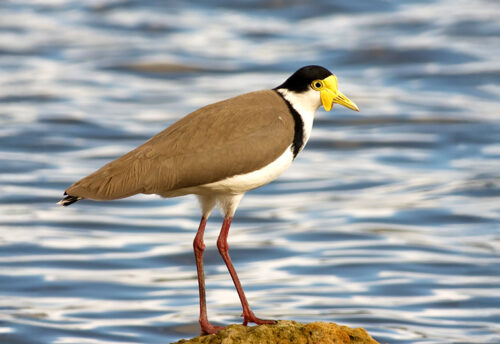
The ortolan bunting, aka ortolan, can be found throughout Europe, into western Asia, and they migrate down into Africa. They like open landscapes with trees, sparsely distributed shrubs, and thinned out grassy vegetation. These birds can also be seen inhabiting thickets, forest edges, and even gardens. Due to their wide spread population and large numbers – just under 18,000,000 – these birds are listed as Least Concern by the IUCN. Although their numbers are listed as decreasing.
First the Stats…
Scientific name: Emberiza hortulana
Weight: Up to .7 ounce
Length: Up to 6.7 inches
Wingspan: Up to 11.4 inches
Lifespan: Up to 5.8 years
Now on to the Facts!
1.) The ortolan bunting is typically solitary, in nature. But will gather into small groupings when food is abundant.
2.) These birds are diurnal (active during the day).
3.) They hop, walk, or run, when looking for insects.
4.) When threatened, they will typically fly away to a low laying branch or nearby fence for safety.
5.) Their typically heard call sounds like, “Tsi.”
But wait, there’s more on the ortolan bunting!
6.) Throughout the year, these birds will eat mostly seeds. However, during breeding season, they switch over to a variety of insects.
7.) Ortolans breed from mid April to early June.
Did you know…?
These birds can reach flight speeds of up to 45 mph.
8.) Their nest is constructed on the ground, hidden within bushes and/or taller grasses.
9.) The nest is built with leaves, thin roots, and dry stems.
10.) Females lay up to 5 eggs that hatch within 12 days.
But wait, there’s still more on the ortolan bunting!
11.) The chicks remain in the nest for up to 13 days. At which time, they begin to take flight.
12.) Both parents raise the chicks.
13.) Ortolan buntings are preyed on by birds of prey, domestic and feral cats, and humans also eat them.
14.) The ortolan is served in French cuisine, as an illegal delicacy, typically they are cooked and eaten whole. Traditionally diners of these birds will cover their head with their napkin, or a towel, while eating them. It is thought that covering the diner’s head allows for them to spit out the bones of the bird, without being seen doing so.
15.) Ortolans are migratory and head all the way south, to Africa, each year during the winter.
Now a Short Ortolan Bunting Video!
The video talks, in part, of how a ortolan is consumed. It could be mildly disturbing to some.
Be sure to share & comment below! Also, check out the Critter Science YouTube channel. Videos added regularly!
Want to suggest a critter for me to write about? Let me know here.
Think you know a lot about critters? Try your hand at these fun, free quizzes:
Photo credit: Pierre Dalous



